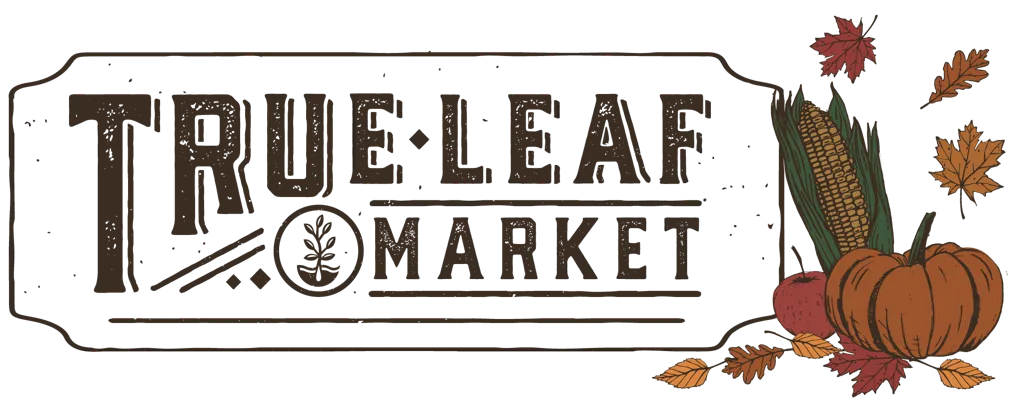Download Free Vegetable Growing Guide PDF
Growing Organic Broad Windsor Fava Bean Cover Crops
Heirloom Broad Windsor fava bean cover crop is a cool weather garden crop best broadcasted directly in fall or early spring. Open-pollinated fava beans can be presoaked overnight to accelerate germination prior to sowing. Non-GMO Broad Windsor fava bean germinates in 7-14 days. They can be thinned to a spacing of 8-10" apart. Legume seeds are often inoculated with Rhizobium bacteria at time of garden sowing. Although heirloom Vicia faba does not have too many pests or insects, it is known to be susceptible to leaf spotting diseases such as mosaic viral disease, bacterial blight, and slight anthracnose. Allow soil to dry between waterings.
Benefits of Organic Broad Windsor Fava Bean Cover Crops
Non-GMO Vicia faba is a popular cover crop traditionally sown in the fall to replenish nitrogen content in garden soil. Whether grown between seasons or alongside a crop as a nitrogen-boosting companion plant, heirloom fava bean seeds can be sown nearly any time of the year. Fall planted fava beans will mature quickly to supplement depleted nitrogen, but will not fruit until 8-9 months after garden sowing.
Terminating Broad Windsor Organic Fava Bean Cover Crops
When growing as a cover crop, terminate about a month before sowing a new crop. Can be mown down with a mower, string trimmer, tiller, power sheers, or a sickle/scythe. Mown plants can be left to decompose on the soil surface or tilled, plowed, or turned back in the soil to add organic matter and nutrients directly into the feeding zone.
About Broad Windsor Fava Bean Organic Garden Seeds
Fava Beans are one of the oldest cultivated crops, with evidence of cultivation going back to ancient times. These beans were traditionally grown for their ability to thrive in cooler climates and poor soils, making them a reliable source of nutrition.
Fava Beans are frequently grown as a cover crop. They can be a high-protein grazing option or simply an easy way to add nitrogen back into fallow fields while preventing erosion.
Also known as broad beans, favas are an excellent source of protein, fiber, vitamins (especially folate and vitamin K), and minerals such as iron and magnesium.
Unlike other beans that thrive in warm weather, fava beans prefer cooler temperatures, making them ideal for early spring or late fall planting.
Tips From Our Gardeners
"To maximize the amount of nitrogen added back into the soil after planting these, only harvest the beans and then till the rest of the plant back into the soil."
 |
- Lara Wadsworth, True Leaf Market Writer
|
Other Resources
Broad Windsor Fava Bean Seeds Per Package:
- 30 g - Wholesale - Approximately 15 Seeds
- 4 oz - Bulk Seeds - Approximately 60 Seeds
- 1 lb - Bulk Seeds - Approximately 240 Seeds
- 5 lb - Bulk Seeds - Approximately 1,200 Seeds
- 25 lb - Bulk Seeds - Approximately 6,000 Seeds
Non-GMO Organic Broad Windsor Fava Bean Cover Crop Seeds are available for Fast Free Shipping on qualifying orders.
=======
ATTRIBUTES
Basic Info
| Latin Name: |
Vicia faba
|
| Bean Sub-Type: |
Fava - Fava beans (also called broad beans) look like large lima beans they are less starchy than lima beans and have a slightly sweet, mild nutty flavor and a creamy texture. |
| Broad Windsor Fava Bean Color: |
Green |
| Broad Windsor Fava Bean Flavor: |
Earthy and nutty with a creamy texture when cooked. |
Growing Info
| Hardiness Zone: |
3, 4, 5, 6, 7, 8, 9 Annual Crop: Not Intended to Overwinter |
| Days to Maturity: |
80-90 |
| Days to Germination: |
5-10 |
| Seeding Depth: |
1 inch |
| Plant Spacing: |
4-6 inches |
| Row Spacing: |
18-30 inches |
| Plant Height: |
24-36 inches |
| Growth Habit: |
Upright |
| Soil Preference: |
Beans prefer well-draining, nutrient-rich, loamy soil with a pH of 6.0-6.8. As light feeders and nitrogen-fixing legumes, beans do not require nitrogen-heavy fertilizers. |
| Temperature Preference: |
Cooler (50-70 F) |
| Light Preference: |
Full Sun |
Other
| Direct Sow: |
Yes, direct sow when soil temperatures are reliably above 60 F. Planting with an inoculant may increase yields, but is certainly not required for a successful grow. |
| Start Indoors: |
Not Recommended. Beans grow best without any root disturbance. We recommend direct sowing instead of transplanting. |
| Bean Pollination: |
Beans are self-pollinating as they contain both the male and female parts within their flowers, unlike other fruit and vegetable plants. While they are self-pollinating, having a variety of pollinators and flowers around will improve yields by ensuring the greatest chances for pollinating events to occur. |
| Snap or Shell Bean: |
Shell - Shell beans have a non-edible woody or fibrous husk that contains the edible beans within. For example, edamame has the beans inside, but you wouldn't want to eat the husk. Shell beans are also sometimes referred to as shelling beans. |
| Pole or Bush Bean: |
Bush - Bush beans grow on low-growing, compact, upright, bushy plants that typically do not need a trellis, pole, or other support. Bush beans are usually favorable to container growing. |
| Plant Width: |
12-18 inches |
| Growth Speed: |
Mid - Ready for harvest around 66-86 days. |
| Deer Resistant: |
No |
| Germination Temperature: |
70-90 F |
| Pests and Diseases: |
Beans are susceptible to beetles, aphids, spider mites, and cutworms. Look for signs of chewing, curling leaves, eggs on the undersides of leaves, and leaf discoloration. Keeping your bean plants clean from dust build-up and surrounded by a variety of plants to help deter and prevent pest damage. Beans are also susceptible to powdery mildew, bean blight, rust, and root rot. Maintain a regular watering schedule that avoids overly saturated soil. The roots need adequate time to air out between watering. This will also help prevent common fungal and bacterial diseases from developing. Good air circulation and applying water to the ground rather than the leaves will help maintain healthy bean plant growth. |
| Garden Size: |
Greenhouse, Garden Plot, Raised Bed, Container |
| Bean Use: |
These beans are versatile and can be used fresh or dried. They are popular in salads, stews, and purees. The young leaves can also be eaten like spinach, and the dried beans are excellent in soups and casseroles. |
| Climate Tolerance: |
None of note. |



















